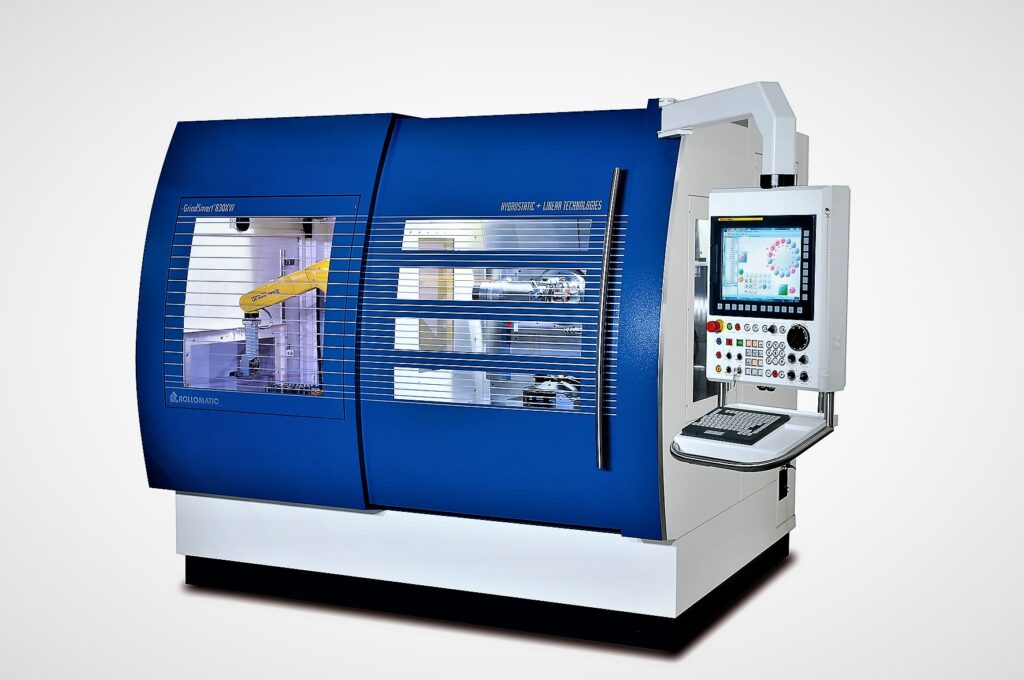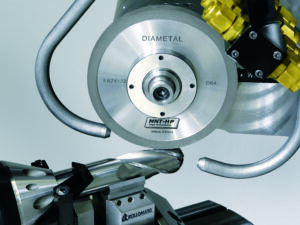 The years seem to fly by as you consider the company’s founding in 1964 in Switzerland to the global OEM it is now less than 60 years later. Launched by Francis Rollier as a cutting tool manufacturing firm for the local watch industry, it wasn’t long before new advents began to accumulate: the first manual flute and relief grinder called “Roll-o-Matic” for in-house use; the first CNC grinder for pointing with a patented positioning system; the first cylindrical grinder with simultaneous roughing and finishing operations (patented); and the first CNC fully-automatic 6-axis grinding center, the CNC600X.
The years seem to fly by as you consider the company’s founding in 1964 in Switzerland to the global OEM it is now less than 60 years later. Launched by Francis Rollier as a cutting tool manufacturing firm for the local watch industry, it wasn’t long before new advents began to accumulate: the first manual flute and relief grinder called “Roll-o-Matic” for in-house use; the first CNC grinder for pointing with a patented positioning system; the first cylindrical grinder with simultaneous roughing and finishing operations (patented); and the first CNC fully-automatic 6-axis grinding center, the CNC600X.
The company’s strategic plan for growth – beginning by targeting Europe and the Far East – led to its first U.S footprint in the Chicago area in 1993. While it had serviced the N.A. market through representatives and distributors for quite a few years, the idea was to grow closer to its end-users while at the same time strengthening and streamlining its global structure. Once the headquarters for North American operations had been established in Mundelein, Illinois, an effective distribution network began being developed. With all manufacturing of the company’s products taking place in Switzerland, any necessary customization generally occurs there, with inventory in the warehouse at the Illinois facility either ready to ship or easily tailored to spec. Although satellite locations around the world can conduct grinding tests, cycle time tests, and customer runoffs, etc., all R&D takes place in Switzerland, with weekly teleconferences between sales managers and engineers to share customer feedback and discuss modifications that might be incorporated into future machine tool designs. One result? The GrindSmart 830XW, which utilizes a combination of hydrostatic technology and linear motors to produce large and small series with 6 axes interpolated simultaneously; the only machine tool to incorporate these specific technologies together.
 According to Eric Schwarzenbach, president of Rollomatic’s North American operations, the company’s roots in precision machining remain within its DNA, although it has substantially increased the size, function, and capabilities of its product line (see sidebar). “Although we’re a machine tool OEM now, manufacturing grinders and robotics, we still strive toward precision in all our efforts just as we did when our sole focus was on Swiss watchmakers.”
According to Eric Schwarzenbach, president of Rollomatic’s North American operations, the company’s roots in precision machining remain within its DNA, although it has substantially increased the size, function, and capabilities of its product line (see sidebar). “Although we’re a machine tool OEM now, manufacturing grinders and robotics, we still strive toward precision in all our efforts just as we did when our sole focus was on Swiss watchmakers.”
The past year has presented Rollomatic with the same challenges it has to everyone involved in industrial manufacturing: when your annual outreach depends heavily on attending 8-10 tradeshows around the world, how do you compensate when that option has been suspended?
“We responded by creating the Digital Rollomatic World, which can be accessed on our website,” Schwarzenbach says. “It is packed with useful information that’s constantly updated, and even provides a way to schedule one-on-one conversations with our specialists who can help customers address the specific challenges they encounter. We’ve also fine-tuned our webinar content to reflect the changing times.
“The most amazing thing, however,” he says, “is that last year we signed up our largest number of new accounts in the company’s history. So I definitely think we’ll have much to learn from this period that will be of permanent benefit once these storm clouds have passed.”
 Asked whether the global manufacturing industry will emerge from this period stronger for the lessons it learned, Schwarzenbach believes that will definitely be the case, but it also depends on the approach companies chose to take from the start. “You would see the typical reaction, which was to start sending people home, but we chose to start training them instead. And that’s already paying huge dividends, which we expect to be magnified once the recovery really begins to gain traction. We didn’t sacrifice our base of experienced employees, so we’re poised to meet any and all of the opportunities that come our way.”
Asked whether the global manufacturing industry will emerge from this period stronger for the lessons it learned, Schwarzenbach believes that will definitely be the case, but it also depends on the approach companies chose to take from the start. “You would see the typical reaction, which was to start sending people home, but we chose to start training them instead. And that’s already paying huge dividends, which we expect to be magnified once the recovery really begins to gain traction. We didn’t sacrifice our base of experienced employees, so we’re poised to meet any and all of the opportunities that come our way.”


















